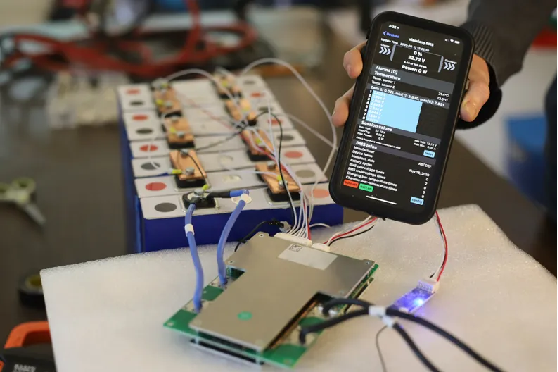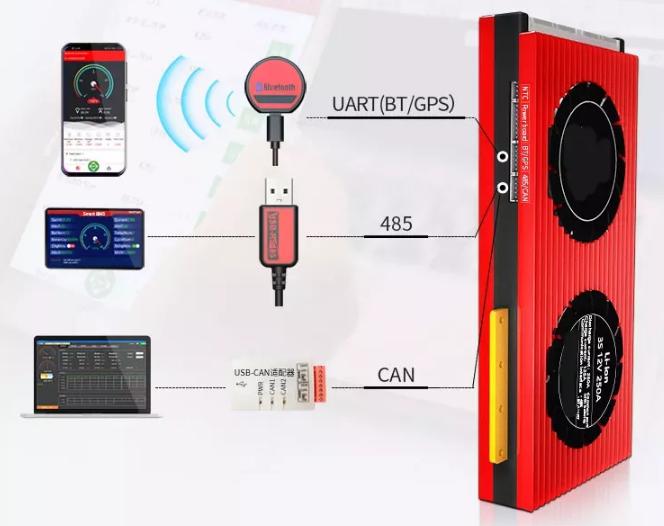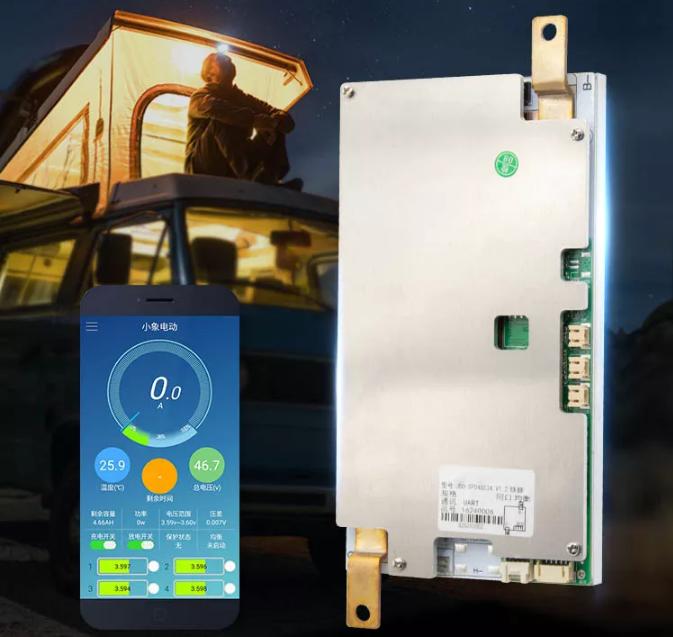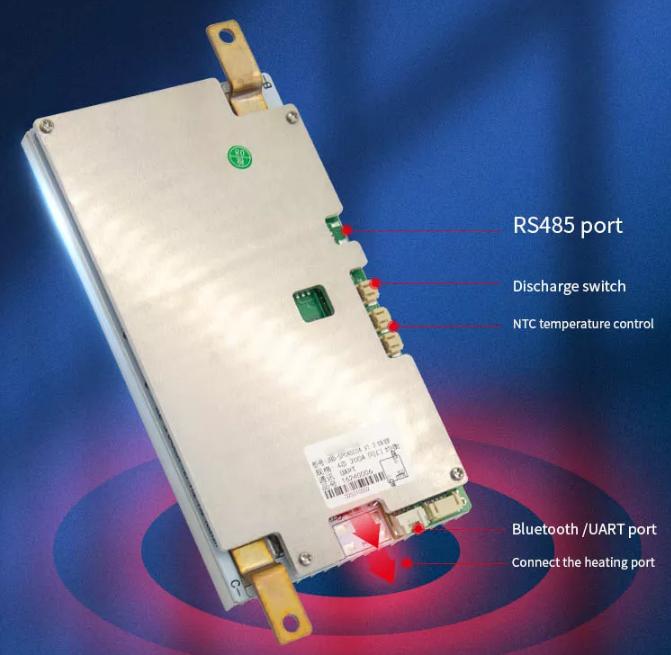What Is A Good BMS For LiFePO4 Battery Pack?
 Dec 01,2022
Dec 01,2022

 Basen
Basen

What is BMS
BMS, Battery Management System, is a mandatory component for LiFePO4 batteries.LiFePO4 or all lithium battery cells are sensitive to over-voltage, under-voltage, and over-current. If a LiFePO4 battery is kept under one of the above conditions for a long time, it can easily cause capacity degradation, battery damage, or even the risk of fire.
Therefore, the primary task of the BMS is to protect the LiFePO4 battery cells. Then, they can be working at the appropriate voltage, current, and temperature.
BMS provides protection and recovery functions for the battery pack, such as over voltage, under voltage, over current, high temperature, low temperature, short circuit and charge opposite connection. Accurate measurement of SOC and statistics of SOH health status are realized in the process of charge and discharge. Realize voltage balance in charging process. Display and set alarm protection parameters, such as voltage, current and temperature, store and display real-time and historical data of battery operating status through human-computer interaction of the upper computer software.
BMS Has a variety of sleep and wake up modes. The parallel communication between cells is realized by RS485 bus. Communicate with inverter through high-speed CAN communication or RS485 communication. Parameter configuration and data monitoring are carried out through computer software human-computer interaction. It can be widely used in indoor and outdoor household energy storage battery management, such as solar energy storage, wind energy storage and other forms of micro-grid energy storage and other energy storage applications.
Basic Function and Working Principle of BMS
1.Cell and Battery Pack Voltage Detection
Overvoltage, low-voltage warning and over-voltage and under-voltage protection of cells and battery packs. The voltage detection accuracy of the cell is ±5 mV from -10°C to 50°C, and other conditions ±10mV.
2.Battery Packs Charge and Discharge Current Detection
Overcurrent alarm and protection of battery pack charge and discharge current, battery pack output short circuit protection. The continuous charge and discharge current is 100A, the temperature rise is less than 50°C, and the current detection accuracy is better than 1%.
3.Cell Environment and MOS Temperature Detection
6-channel temperature monitoring: 4-channel cell temperature detection, 1-channel ambient temperature detection, 1-channel MOS temperature detection, temperature detection accuracy of ±2°C.
4.Battery Capacity and Cycles
Real-time calculation of the remaining battery capacity, a complete charge and discharge cycle (triggering the over-discharge of the BMS setting, overcharge/full charge protection) to complete the learning of the total capacity of the battery pack, the capacity estimation accuracy is better than 5%. The number of charge and discharge cycles can be automatically configured and recorded.
Ampere-hour integration and advanced battery capacity calculation models (models require accurate cell parameters for customers) enable accurate calculation of battery SOC.
SOC correction is supported by open circuit voltage static calibration method and charge and discharge dynamic calibration method.
5.Charge and Discharge MOSFET Switch
Low internal resistance, high current, optimized design for large capacitive load start-up, zero switching, and high charging withstand voltage for inverter applications.
6.Equalization of Intelligent Cell
The charge equalization strategy can be set flexibly to effectively improve battery life and cycle life.
7.LED Light Status Indication
6 LED indicate the remaining battery capacity, operating mode and alarm protection status.
8.Power On, Power Off, Reset Button
Weak current switch: intelligent one-key switch design, can manually turn on and start the system when it is turned off, and can be manually shut down when it is in any state,
Reset and sleep button: Long press the button 3-6S in non-backup state to sleep, and long press 3-6S to wake up in leisure state.
9. RS232, RS485, CAN Communication Port
The PC or intelligent front end can realize battery data monitoring, operation control and parameter setting through low-speed RS485 or RS232 communication for telemetry, remote signaling, remote adjustment, remote control and other commands. Low-speed RS485 realizes battery cascade monitoring and management.
The inverter or terminal can realize the acquisition of battery status data and the adjustment of its own output through high-speed CAN or RS485 communication.
10.Set of Battery Management Parameters
The battery management parameters such as over-and under-voltage of single battery, total battery over-under-voltage, charging overcurrent, discharge overcurrent, cell high and low temperature, environmental high and low temperature, balance strategy, battery series number of cells, battery capacity and so on can be reset by the upper computer.
11.Switch Control of Functions
It can open and close the discharge MOS, charge MOS, current limit function switch, buzzer alarm switch, forced sleep switch, etc. through the upper computer.
12.Current Limiting Function
It can be configured with 10A/20 current limiting module, and the upper computer can set the charging current limit mode: no current limit, passive current limit, and active current limit.
13.Hardware Watchdog Function
The BMS design is equipped with a unique hardware watchdog protection circuitry. Ensure that the BMS can operate safely and reliably for a long time in harsher environments.
14.Data Storage Function
The BMS system can be set to enable the system to store operation data in real time, for system monitoring, analysis and maintenance.
EEPROM: Supports up to 1000 historical records.
FLASH: Supports up to 20,000 historical records, this mass storage function is optional.
15.System Upgrade Function
The BMS system can realize online upgrade of the system software through the serial port (high-speed RS485 communication and low-speed RS485 communication).
16.Dry Contact Function
Support 2 dry contact outputs. Under normal conditions, the 2-way dry contact is in the normally open state, and after an abnormality, the corresponding dry contact is closed. Associated alarms can be defined based on customer needs.
Dry contact 1: short circuit, discharge overcurrent, charge and discharge overtemperature, ambient temperature, MOS high temperature, charge and discharge MOS fault, sampling AFE fault, temperature disconnection
Dry contact 2: Low capacity (less than 5%)
17.Heating Function
It has a low-temperature heating function of the battery, and the heating circuit has a secondary protection function, and the heating film can be completely disconnected under the abnormal heating circuit.
18.Anti-reverse Connection Function
With anti-reverse circuit, when the positive and negative polarity of the external power supply is reversed with the positive and negative polarity of the BMS, the BMS is not damaged and alarmed and enters the cut-off protection state.
19.Secondary Protection Function
BMS can drive the trip device to disconnect the external output loop when the charge and discharge MOS fault or the voltage of the single cell is too high or too low, so as to achieve the effect of secondary protection.
Want to know more details about Basengreen LiFePO4 BMS? Please feel free to contact our LiFePO4 BMS experts.








 HOME
HOME





 The Future Of IRELAND Will Be ‘Powered By The Sun’
The Future Of IRELAND Will Be ‘Powered By The Sun’ 


 You May Also Like
You May Also Like

 Tel
Tel
 Email
Email
 Address
Address